Is it fair to say that gravel has become a little bit of a meme of itself?
Relatively recent history stated that it was a sport for being chill (or whatever the youth say today). The “spirit of gravel” wasn’t about racing, it was about enjoying the ride, drinking a shot, or taking on a BBQed spare rib for mid-event fuel rather than the scientific X-amount of grams and electrolytes per hour. That’s still there somewhere, but it’s now buried or even lost to the news of who accomplished whatever race or distance at some fantastical speed (and yes, we are as guilty as all media outlets for doing this).
People thought that the UCI was going to kill the once-chested and hyped “feels” that gravel was all about, but it seems that the bigger races (or not officially races, here’s looking at you, Traka) have made it worth a discussion point for another article.
This facet of gravel bikes and the culture around it has exploded. After all, it’s where all that sponsorship cash can be found. It’s also showing up more than ever in brands’ product lines, not just the bikes, but also the race jerseys with built-in camelback-style bladders, rapid-access aero top tube bags, you know the stuff, I mean. And unsurprisingly, it’s where the new Orbea Terra Race family fits and performs.
So, what is Orbea’s first dedicated gravel race offering all about?
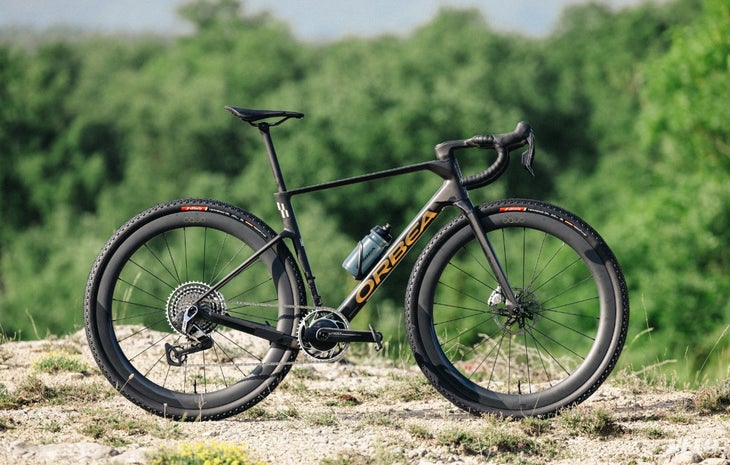
The second-generation Orbea Terra wasn’t officially a race bike; it was more of a gravel bike for all. However, it also wasn’t a bike that shied away from competition. After all, it achieved podium places at both of the past two UCI World Championships.
The new Orbea Terra Race, though, has been designed from the ground up with racing in mind. If you’re after what the old Terra was, an all-rounder, head here, as just last week they released all we call the Terra Race’s companion bike, the third-generation Orbea Terra.
The good folks at Orbea claim that this Terra Race is the most aggressive gravel bike on the market. I’ll get into whether that’s true in the first ride review. But for now, let’s delve into the details.
Quick hits: Six things to know about the Orbea Terra Race
- The Orbea Terra is the third generation of the Basque brand’s do-all gravel bike
- Features SRAM UDH and the MyO custom component and paint program
- Frame weight: 910 g (size medium, unpainted), or 130 grams lighter than the Terra
- Max tire clearance: 700c x 45 mm with 6 mm clearance on either side
- Sizes: six, XS to XXL
- Price: starting at €4.999/ $5.199/ £4.699
- For more: orbea.com
The Terra Race is more much more aggressive
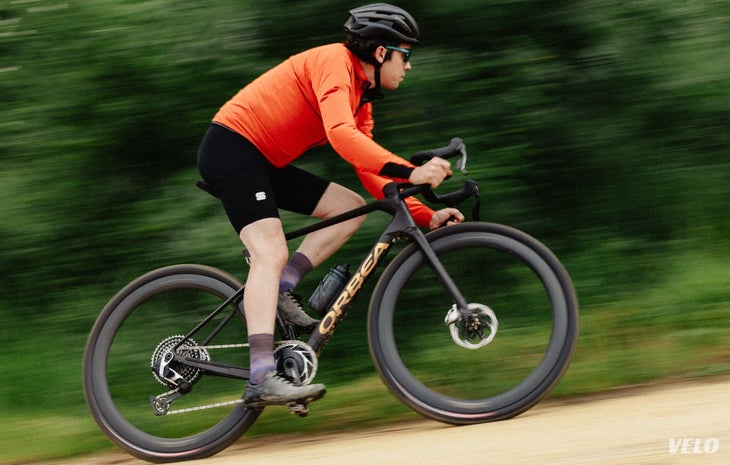
Tyre clearance is (conservatively) claimed to be 45 mm, healthy enough for what Orbea thinks his style of bike needs. They hasten to add that there is 6 mm of clearance around both the fork crown and chainstays, which, as we all know, means if you’re using it on loose dry gravel, can certainly be pushed wider, unofficially (wink wink, nudge nudge).
Weight and ride quality are something that Orbea has focused on over aero gains for the Terra Race because, let’s be honest, gravel and aero don’t mix as well as they do in road cycling.
With a claimed frame weight of 910 g (med unpainted, which I recommend, as it looks outrageous in the flesh), which not just shaves but chops a chunky 300 g off the previous generation Terra, add to that a fork weight of 425 g. To achieve this, Orbea has used their OMX carbon layup, unlike the OMR layup, which is used on the new Terra. The OMX uses fewer pieces, so it is lighter while also offering a stiffer ride quality. It’s the same carbon and layup technique that you’ll find on all of Orbea’s top-end race bikes.
Even though weight has been prioritised, they’ve incorporated a few aero flourishes where they can, mainly in the parts used. This includes a new one-piece cockpit (more on this later), a hidden seat clamp, and a few subtle aero tube sections, although nothing aggressive.
They’ve also included the new Oquo RP50LTD wheels, which all models come equipped with, as an easy area to gain genuine aero tweaks to the bike. As a platform, the bike leans very much in the direction of what they have done with the current Orca.
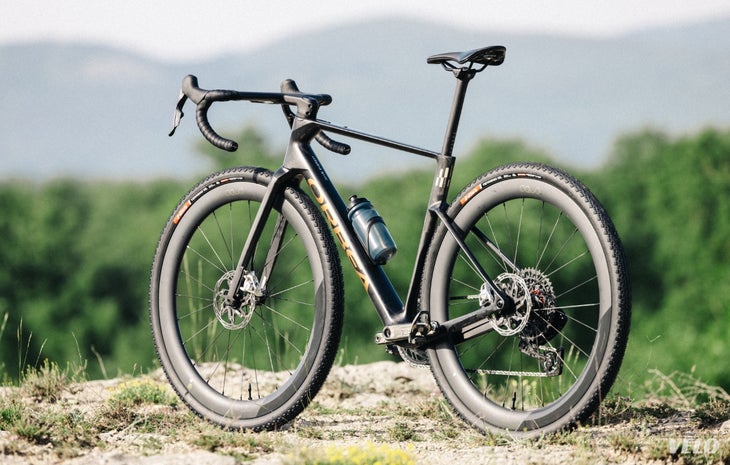
Comfort is also one of the other design pillars, but don’t expect there to be as much “plushness” as the new Terra. The rear triangle, we’re told, is shaped to absorb high-frequency trail chatter while keeping the rear wheel planted during acceleration. The curves, tube shapes, and design language are definitely being carried over from bikes such as their Denna (e-gravel) range.
The focus on stiffness for all that power you’ll be throwing down has been finely tuned for each size, with larger frames receiving extra support where needed, while smaller sizes remain lighter and agile.
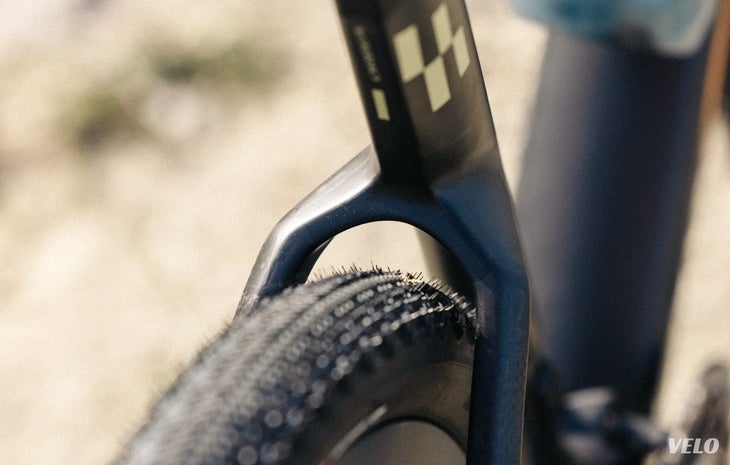
As for storage, as seen on the accompanying Terra? Orbea says that after researching with those who race, storage boxes are now considered a little passé in the racing ranks and rarely used. Rather, riders prefer to tape CO2 inflators and other accessories onto their bikes instead.
Another reason we were informed of the lack of down tube storage is that, unsurprisingly, having a large hole in the frame and replacing it with a removable lid affects stiffness and adds weight. There is, though, a top tube bag mount. Just don’t expect to be hauling a week’s worth of supplies on this thing.
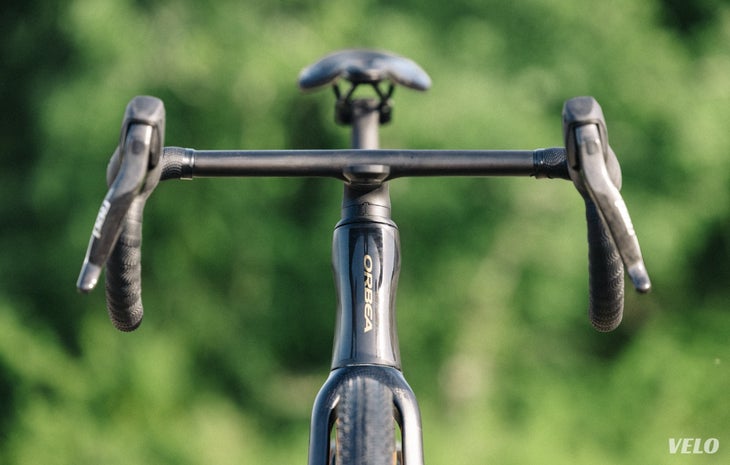
As for the details, you’ll find a new welcome SRAM UDH (Universal Derailleur Hanger) dropout, with most models in the range using it due to the new SRAM Rival, Force, and current Red seemingly being preferred stock builds. The seatpost is a rounded 27.2 mm offering, which means a more compliant ride than a D-shaped aero post.
There is also the new OC SH RA10 integrated cockpit, a one-piece carbon bar and stem. The weight is claimed to be 314 grams (400 mm bar / 100 mm stem), with some of the low weight coming thanks to the use of titanium hardware across the bars. And believe it or not, but the computer mount is compatible with the monstrous Wahoo Ace computer
Unfortunately, the new cockpit is only designed for wireless shifting (sorry, mechanical shifting fans). Further, the cockpit is only available in 11 size combinations, though Orbea mentioned the possibility of more options to come, as they already have moulds made for their pro teams and riders. Fingers crossed.
The Orbea Terra Race is compatible with both single and double-chainring setups. Obviously, the type of front chainrings you use can affect the tyre clearance. For instance, if you choose to run a double chainring with a 36 inner-toothed chain ring, it’ll result in you only being able to run a 40 mm tyres.
Geometry (measurements in mm)
| Size | XS | S | M | L | XL | XXL |
|---|---|---|---|---|---|---|
| Seat Tube (C-T) | 405 | 440 | 470 | 505 | 540 | 575 |
| Top Tube (EFF) | 523 | 538 | 555 | 567 | 585 | 600 |
| Head Tube | 95 | 120 | 139 | 162 | 181 | 205 |
| Chainstay | 420 | 420 | 420 | 420 | 420 | 420 |
| BB Drop | 78 | 78 | 78 | 76 | 76 | 76 |
| Wheelbase | 1005 | 1018 | 1026 | 1040 | 1048 | 1058 |
| Head Angle | 70 | 70.5 | 71 | 71 | 71.5 | 72 |
| Seat Angle | 74 | 74 | 73.5 | 73.5 | 73 | 73 |
| Rake | 55 | 55 | 55 | 55 | 55 | 55 |
| Standover | 680 | 710.8 | 735 | 764.6 | 791.4 | 821 |
| Reach | 375 | 383 | 389 | 395 | 402 | 409 |
| Stack | 514.9 | 540 | 560.3 | 580 | 600 | 625 |
| Fork Length | 390 | 390 | 390 | 390 | 390 | 390 |
| Trail | 65.6 | 62.4 | 59.2 | 59.2 | 56.1 | 53 |
Oddly enough, unlike the new Terra, the Terra race doesn’t differ too much from the second-generation “standard” Terra. It now has a 10 mm lower stack across the board. Reach is increased slightly too, mixed with a shorter stem, size-specific fork trail, 420 mm chainstay for all sizes, and a touch longer wheelbase.
Builds, specs, and pricing
Build Specs Pricing (€/$/£) Orbea Terra Race M11eLTD 1X SRAM Red XPLR AXS with Oquo RP50 LTD wheels 9.999€ / $10.499 / £9.899 Orbea Terra Race M21eLTD 1X SRAM Red XPLR AXS with Oquo RP50 LTD wheels 6.599€/ $6.899 / £6.299 Orbea Terra Race M20iLTD Shimano GRX RX825 2×12 Di2 with Oquo RP50 LTD wheels 5.999€ / $6.199 / £5.699 Orbea Terra Race M31eLTD 1X SRAM Rival 1 XPLR groupset with Oquo RP50 LTD wheels 5.499€ / $5.699 / £3.899 Orbea Terra Race M20LTD Shimano GRX RX820 2×12 with Oquo RP50 LTD wheels 4.999€ / $5.299 / £5.199
The Terra Race is available in three different stock colours: Frozen Concrete, Spaceship Green, and Sunset Carbon (order this one, you won’t regret it).
And of course, these bikes, like many of Orbea’s range, are available on their customisation program, MyO. Here, you can not just spec different components but also customise the paint scheme.
Riding the Orbea Terra Race
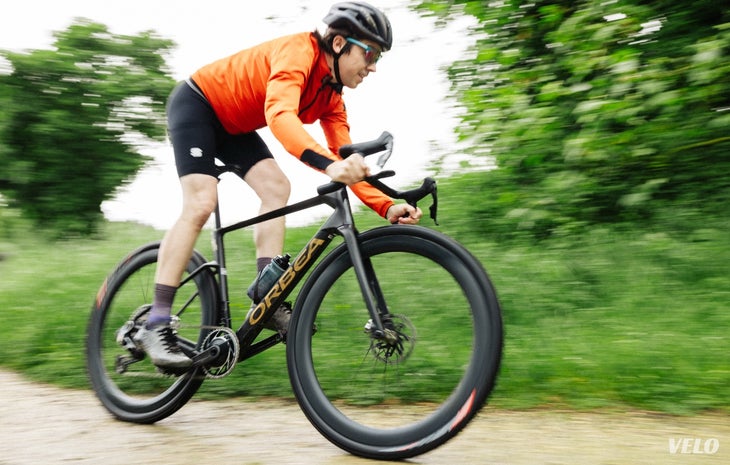
As a rider who comes from a road racing background, this bike was a gravel bike that ticked all the boxes that I didn’t know I wanted out of a gravel bike.
I’ve played on a few race gravel bikes in the past few years, including offerings from BMC, Avion, 3T, and Ridley. All were nice machines in their own right, and all with their own character. But the Terra Race certainly stood out from what is becoming not so much a crowded marketplace but a place with a healthy dose of options.
Now, please keep in mind that this is a first ride review. The assembled press, including me, only got 75 km (46 miles) in total to play on the bike. But my very initial impression, and I mean, the first few pedal strokes, was of a light feeling, whippy and rapid ride. These attributes seemed to be the three adjectives that you heard from all who threw a leg over it, from the first moment until we returned.
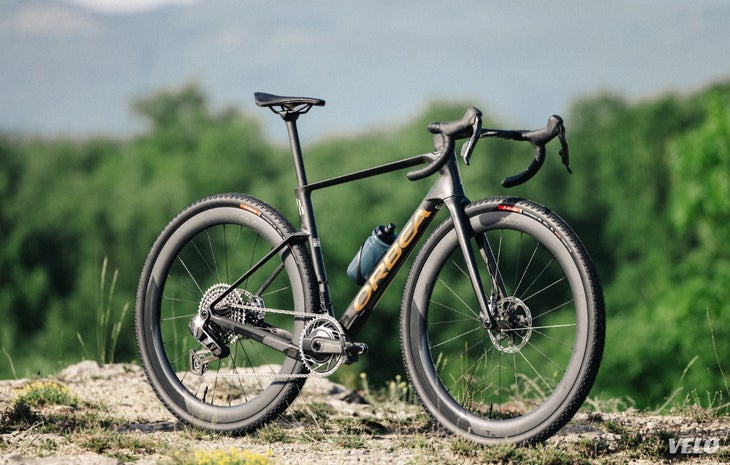
Initially, the weight and handling threw me. I put this down to the race feel of the bike. I somehow expected something different on the road, something more road-oriented. That, mixed with its lightweight and punchy nature, made me feel like this was a direct descendant of Orbea’s Orca road offering. That initial impression, mixed with understandably slightly slacker handling than an Orca, caught me off guard until we reached the gravel, and it was here that things all gelled together.
The day’s route wasn’t particularly technical. Instead, it was fast and loose, with a healthy dose of potholes overflowing with recent rainwater. So, charging through them blindly wouldn’t have been a wise choice. Instead, bunny hopping was the trick of the day, and this bike sure likes a bit of air, or at least it’s a damn breeze to throw about. It goes where you want without worry, tracks confidently, and springs out of corners while keeping its rear end planted under power (even the limited power I have).
I found myself wanting to push harder on the pedals to see what it had to offer. Yes, my lungs and legs regretted chasing after the fitter journalists on the launch when they threw the hammer down, but the smile on my face from how the bike sparkily performed at these moments was more than worth the reminder that my race days are behind me. The Orbea Terra Race is a bike that wants to be pushed.
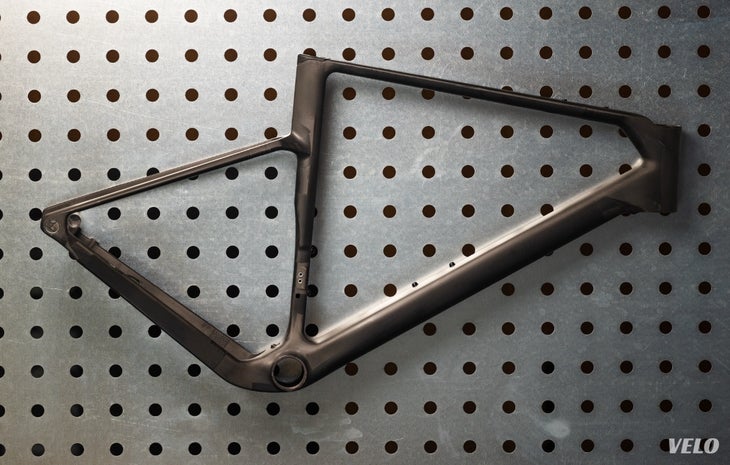
The Terra Race even has the comfort bit of things taken care of. I never felt beat up or wanting for a softer ride. It all feels very harmonious in its performance. Nothing outshines anything else or leaves you wanting more.
Components-wise, the new one-piece bar and stem pleasantly surprised me. I expected a stiff, race-ready bar. Instead, Orbea has delivered a comfortable, well-shaped bar with bags of choices for resting the hands in numerous positions, something that I can’t say is true for some cockpits. The tops weren’t overly aero to make it feel bulky or awkwardly angular in the palm when resting the hands either. The drop was nicely shallow, yet I felt it placed me in a good off-road, racy position. The flair, though minimal, was enough. I’d take these over the comfort bar of the new “standard” Terra.
As mentioned above, all models come equipped with Orbea’s sister brand, Oquo RP50 LTD wheelset. A wheelset that saw action not just at Unbound this year but also at Paris-Roubaix under the Lotto team.
It’s surprising as the Oquo RP50 LTD is a relatively pricey wheelset to spec on the full range. Further, the wheelset makes you question if the price difference between a mid-range build with these wheels and an SRAM Red build is actually worth stumping up the extra cash. I’d certainly say no.
The wheels, deep as they are, don’t feel harsh or overly stiff. Plus, with an inner rim width of 25 mm, it should allow for a healthy tyre to be installed (unofficially, of course).
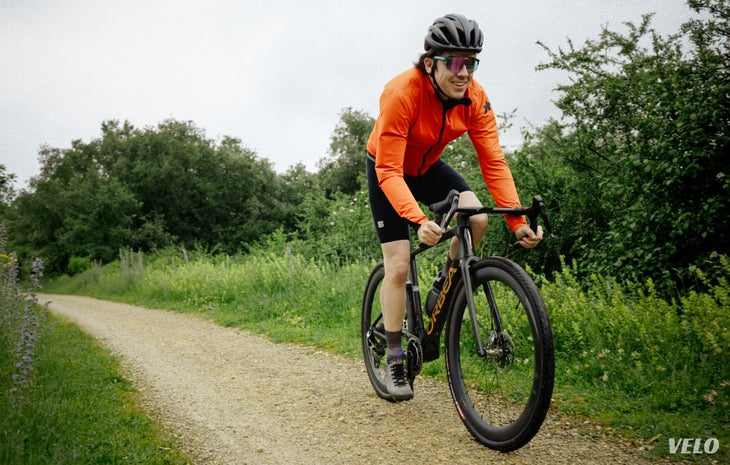
If I had some cold, hard cash to splash down on a gravel bike at the moment, and if it was between this and the new Terra that was announced last week, I personally would opt for the Terra Race flavour in the Orbea gravel line.
The Terra Race is a bike for those who like to be kept on their toes, much like how I felt when I tested the latest generation Orca. It’s not just for those looking at racing but for those who want to go out for a bit of fast playtime rather than a massive day on the bike, full of overly rutted, gnarly gravel. My skills aren’t up to that, plus dad duties are always calling.
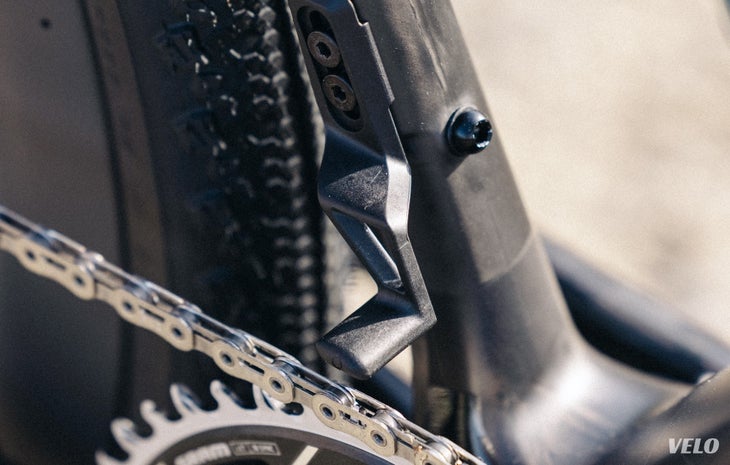
Even though it has “race” in its name, the Orbea Terra Race certainly offers a lot more than what you expect from it. The tyre clearance, though not as wide as many would like, I’d argue, will be enough for most jaunts on a plethora of terrain (then again, I may be wrong as I live in the same region as where this bike has been designed).
It’s a bike ideally suited for dashing from one gravel sector to the next at speed and not feeling like you’re being held back by slack handling or long, draggy wheelbase.
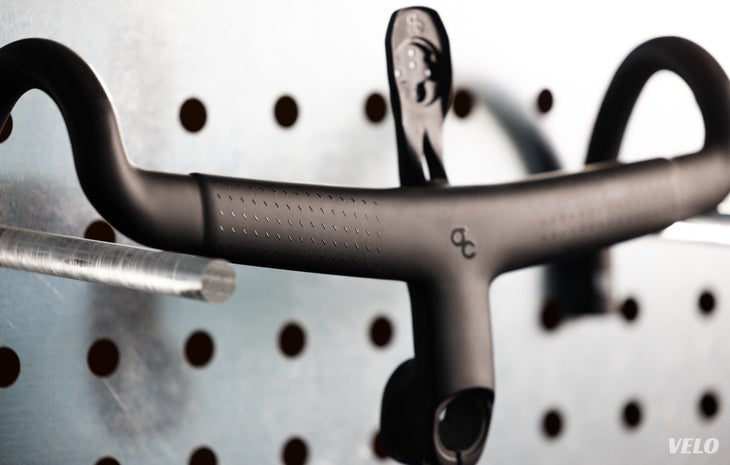
If you can’t tell, I thoroughly enjoyed riding the Orbea Terra Race. In essence, it’s an Orca gravel. It has the springiness, responsiveness, and light weight of the Orca road bike, but it’s all tuned for taking on rougher stuff without beating you up. And like the Orca, I appreciate they’ve focused on the bike’s handling, weight, and comfort rather than trying to crowbar in “aero gains”.
This is a bike that, if you’re in the market for a fast gravel bike to either race or make the most of limited time out on the gravel, I highly recommend. Plus, that raw carbon finish option looks bloody gorgeous, and I usually hate black bikes.